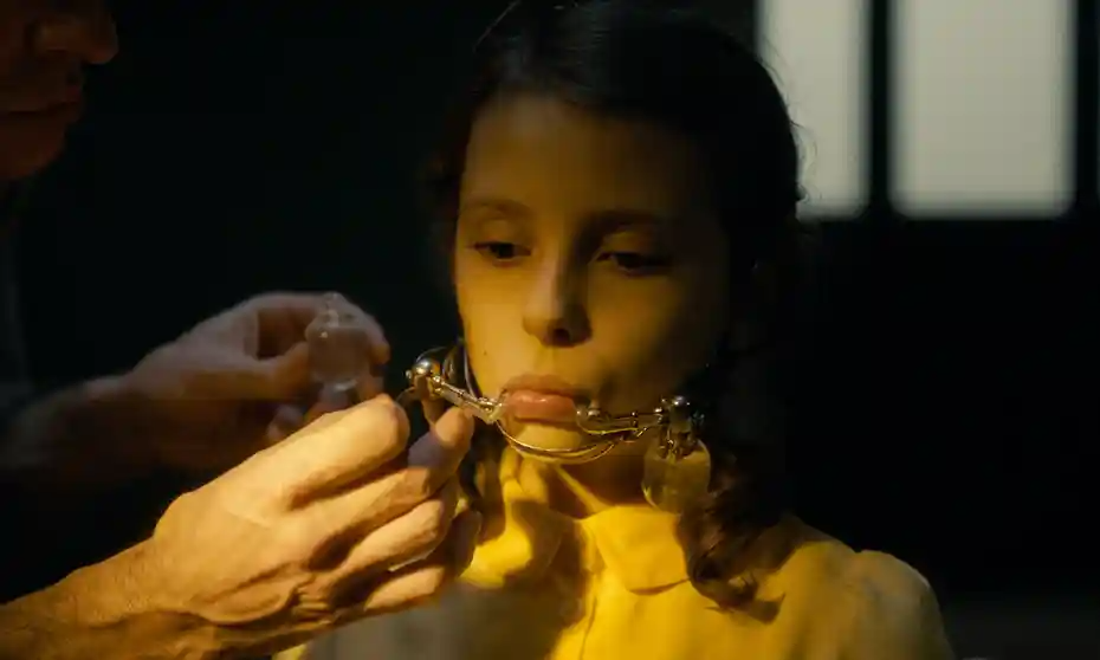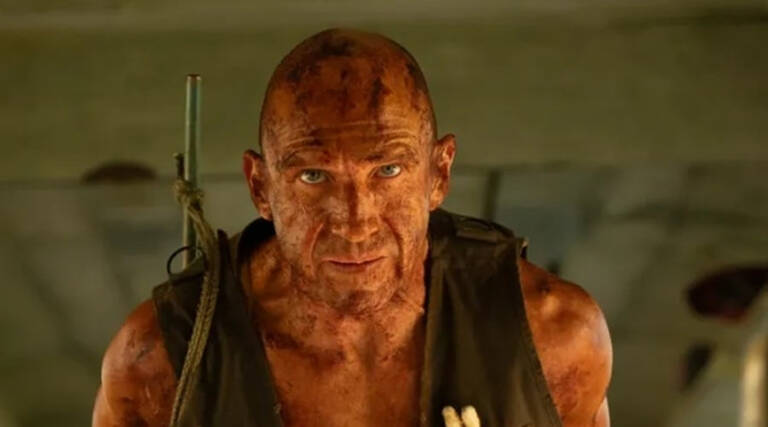
Cast: Paul Hilton, Romane Hemelaers, Romola Garai, Alex Lawther
Review by Colin Dibben
Middle-aged Albert (Hilton) looks after Mia (Hemelaers), a young girl whose teeth are made of ice and need replacing daily.
The almost silent rituals of their life play out in a dark, shuttered apartment. Until Albert receives a telephone call telling him to prepare Mia for life in the outside world.
The call leads Albert into a violent argument in a pub, in which barmaid Céleste (Garai) is seriously wounded; and into a psychic confrontation with his own past.
Earwig is co-written and directed by Lucile Hadzihalilovic, from a novel by B. Catling, author of the successful dark historical fantasy Vorrh trilogy.
Hadzihalilovic has form in creating spellbinding dark fairy tales – her previous films Innocence and Evolution are both immaculate.
Those films focus on inquisitive children. Mia is more like one of Edward Gorey’s Gashlycrumb Tinies, a sad, wan and lonely child who is reduced to dragging a papier-mâché kite around the flat. Albert is the protagonist and this is his story.
This focus isn’t that obvious, as Earwig is primarily concerned with immersing the viewer in an uncanny, dreamlike state.
With dreams come dream symbols and displacements of both characters and body parts. You would find it difficult to summarize the plot of the second half in clear, logical sentences.
But Hadzihalilovic’s control of the visual and sonic experience is so complete that not understanding seems a paltry complaint. This is cinema, right? We don’t need explanatory dialogue and strict narrative sense. We want to be beguiled.
Prepare to be beguiled.
Earwig never drags. It is spellbinding to watch, even though you might expect the dim, cave-like interiors and repetitious behaviours of the characters to have exactly the opposite effect.
There are several technical elements to the spell.
There is the meticulous, fetisthistic way objects are deployed, for example the ingenious headgear which Mia wears that collects her drool so that it can be frozen in teeth moulds, or the kite she makes out of newspaper scraps wetted with her own disintegrating teeth.
In a more phantasmagoric mode, there are the coloured drinking glasses that Albert looks through to achieve psychedelic relief from the drabness of his existence. These episodes are accompanied by a simple, haunting theme from Nicolas Becker, Warren Ellis and Augustin Viard.
There’s the look of the film: full of soft-focus greys that are lightbulb-lit from above to highlight
Albert’s sickly yellow shirts or Mia’s red coat; and the misty, wintry locations.
Hats off to cinematographer Jonathan Ricquebourg and production designer Julia Irribarria. If there was more light, I’d have suggested they were influenced by the painter Balthus, especially with the plot element of creepy men doing creepy things to a young girl.
You might also describe Earwig as looking like a soft-focus, washed-out Guillermo del Toro film “on ketamine”, as they say. Davids Lynch and Cronenberg must also be coordinates, for viewers at least.
Ken Yasumoto’s sound design plays a major part in keeping eyes glued to the screen. The relative silence of the film means that the clacking of metal on teeth, the echo of feet on wooden floors and the crinkling of old newspaper scraps has a powerful emotional impact and keeps the viewer on edge.
I couldn’t look away the entire film.
Trailer:




